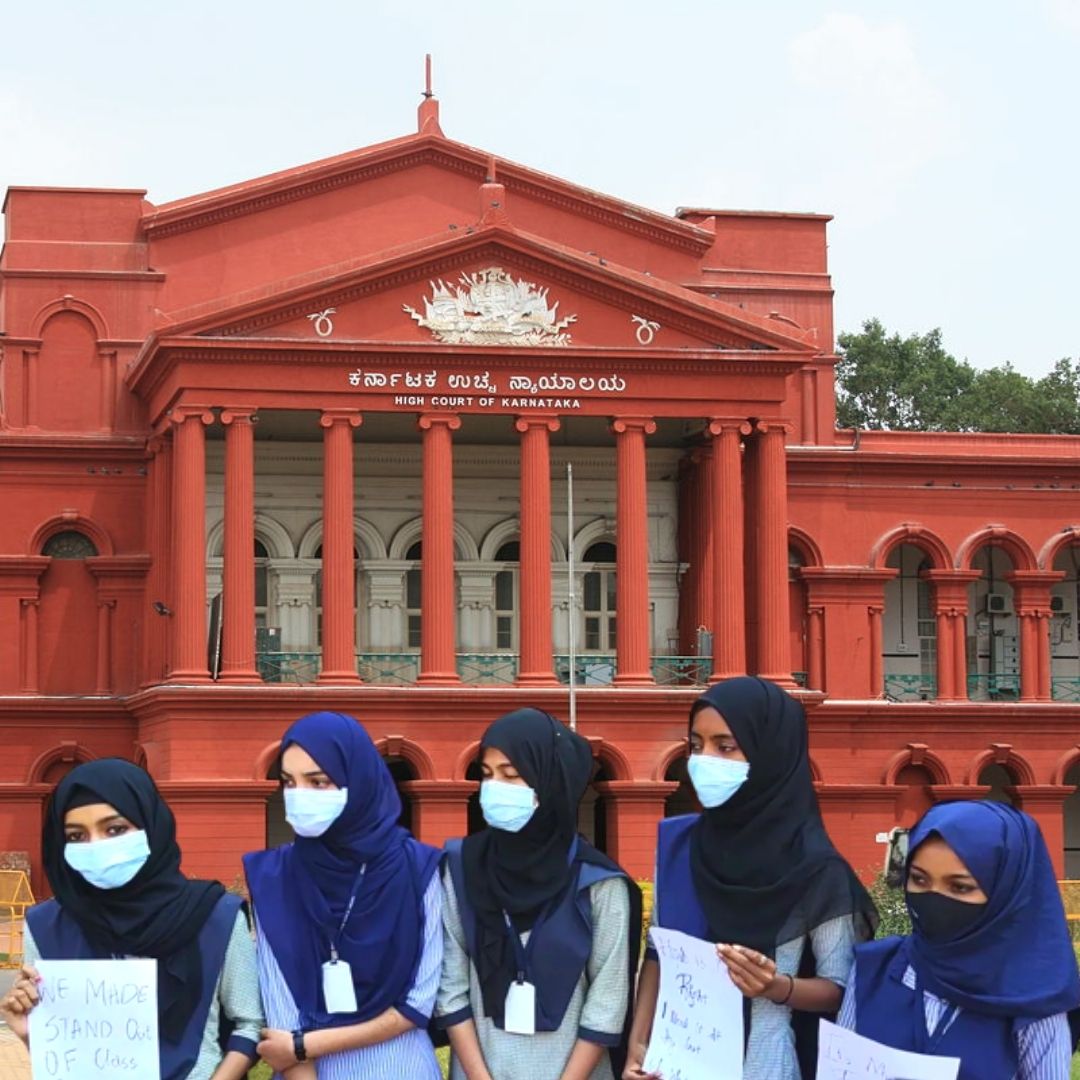
Image Credit- Wikimedia, Indian Express (Representational)
No Hijab In Karnataka's Minority Institution Too, Govt Issues Order
Writer: Shiva Chaudhary
A post-graduate in Journalism and Mass Communication with relevant skills, specialising in content editing & writing. I believe in the precise dissemination of information based on facts to the public.
Karnataka, 18 Feb 2022 9:38 AM GMT | Updated 18 Feb 2022 9:38 AM GMT
Editor : Snehadri Sarkar |
While he is a massive sports fanatic, his interest also lies in mainstream news and nitpicking trending and less talked about everyday issues.
Creatives : Shiva Chaudhary
A post-graduate in Journalism and Mass Communication with relevant skills, specialising in content editing & writing. I believe in the precise dissemination of information based on facts to the public.
All Minority Welfare Department-run educational institutions have been ordered not to allow hijab, scarves, saffron shawls, or other religious symbols in the classrooms.
Amid heavy confusion over the hijab ban order by the Karnataka High Court, the Hajj and Waqf department of the state on Thursday issued other guidelines to all minority institutions to abide by the High Courts order and bar students from wearing religious attire, including Hijab and Saffron scarf.
"The interim order of the full bench of the High Court also applies to residential schools managed by the Minority Welfare Department and Moulana Azad Model Schools (English medium)", according to Secretary for Minority Welfare, Haj and Wakf Department Major P. Manivannan.
All Minority Welfare Department-run educational institutions have been ordered not to allow hijab, scarves, saffron shawls, or other religious symbols in the classrooms.
The order was cited in the circular: "We urge that the state government and all of its partners reopen educational institutions as soon as possible, allowing students to return to their classes. We are prohibiting all students, regardless of their religion or faith, from wearing saffron shawls (Bhagwa), scarf, hijab, religious flag, or the like in the classroom until additional regulations are issued."
"We make it very clear that this directive applies only to the college where the college development authorities have prescribed the student dress/uniform."
The circular states that the directive was issued when it was discovered that female students were attending classes wearing hijab.
Effect Of The Order
Students who wear hijab have already begun challenging officials, organizing protests, and writing memorandums to the state's concerned Deputy Commissioners.
On December 30, 12 female students sent a memorandum to the college's principal requesting that they be allowed to wear hijab in the classroom. Later, six of them decided to attend classes without wearing the hijab, but the remaining six have not attended since then.
On February 16, other Muslim girls in the same college went to class, removing their burqa and hijab after entering the campus.
For now, classes have been resumed in pre-university colleges in Kundapura, Udupi district, where students wearing hijab and saffron shawls staged a protest last week.
Also Read: 'Blaming Previous Ministers Than Admitting Mistakes': Former PM Manmohan Singh Slams PM Modi
 All section
All section














